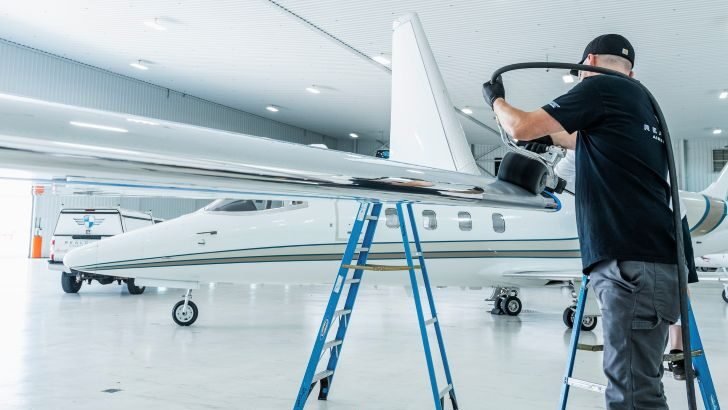The National Association of State Aviation Officials (NASAO) welcome the U.S. Department of Transportation’s (USDOT) National Strategy for Advanced Air Mobility (AAM) on the 122nd anniversary of the Wright brothers’ first flight. The ten-year plan outlines nationwide development and deployment of AAM technologies, while also providing support to State, local, Tribal, and territorial (SLTT) governments. […]
National News
McFarland Johnson Names David Rich, PE, Aviation Design Manager
McFarland-Johnson, Inc. (MJ), a 100% employee-owned planning, engineering, technology, environmental, and construction services firm, has announced that David W. Rich, P.E., has joined the firm as Aviation Design Manager. Rich is based in Concord, New Hampshire, and will focus on MJ’s growing airport and aviation consulting practice in the Northeast. As Aviation Design Manager, Rich […]
Electra Applies for FAA Type Certification for Groundbreaking EL9 Ultra Short Aircraft
Photo – Electra’s Ultra Short technology enables reliable, quiet takeoffs and landings in as little as 150 feet, opening thousands of potential Ultra Short Access Points. Photo provided by Electra. Electra.aero, Inc. (Electra) has announced that it has submitted an application to the Federal Aviation Administration (FAA) for Part 23 type certification of its nine-passenger […]
Construction Prompts Changes to NBAA Plans for 2026 White Plains Regional Forum
The National Business Aviation Association (NBAA) has announced that newly planned upgrades to Westchester County Airport’s (HPN’s) primary runway will require changes to the organization’s White Plains Regional Forum, scheduled for June 3, 2026. Federal Aviation Administration (FAA) officials recently notified Westchester County Airport representatives of the agency’s plans for upcoming runway construction work as […]
Connico Announces New Estimating Director Amid National Growth
Connico has promoted Michael Feeney to Estimating Director. With his expertise on the senior leadership team, Connico will further elevate its cost estimating, value integration, analysis and field observation capabilities. Feeney has more than seven years of experience as a civil engineer and cost estimator. This promotion recognizes his exceptional leadership and technical expertise on […]
Illuminating Engineering Society Appoints Carolyn Woods as Director of Membership
The Illuminating Engineering Society (IES) announced the appointment of Carolyn Woods as Director of Membership. Woods began her role on December 1 and will lead strategic initiatives to enhance member engagement, retention, and growth as IES advances its 2026-2028 Strategic Plan focused on lasting, scalable growth. Woods brings more than a decade of association management […]
RealClean Expands into the World’s Busiest Private-Jet Market
RealClean Aircraft Detailing announced its expansion into New Jersey and Connecticut, establishing new anchor hubs in the tri-state corridor, the busiest private-jet market in the world. This strategic expansion positions RealClean at the heart of one of the world’s most concentrated corridors for business and private aviation — anchored by Teterboro Airport (TEB, #1 in […]
Tyler Kleinsasser Named 1st Recipient of JSSI Aviation Innovation Grant
Tyler Kleinsasser, a student at the South Dakota School of Mines and Technology, was selected as the inaugural recipient of the JSSI Aviation Innovation Grant in partnership with the IADA Foundation. Jet Support Services Inc. (JSSI) is a leading independent provider of maintenance support and financial tools for the business aviation industry. The $5,000 grant […]
Republic Airways and Mesa Air Group Complete Merger
Republic Airways Holdings Inc. (NASDAQ: RJET) announced the successful completion of the merger between Republic Airways and Mesa Air Group, Inc. The transaction was announced on April 7, 2025 and approved by Mesa stockholders on November 17, 2025. Under the terms of the merger agreement, Republic stockholders now own approximately 88% of the combined company’s […]
GAA Nominations Deadline Extended into December
The General Aviation Awards (GAA) Board of Directors announces an updated submission deadline for applications and nominations for the 2026 awards for National Flight Instructors, Aviation Maintenance Technicians, and FAA Safety Team Representatives until midnight on December 19, 2025. Submissions and additional information on the process can be accessed at www.generalaviationawards.com/nominate. The program, a cooperative […]




